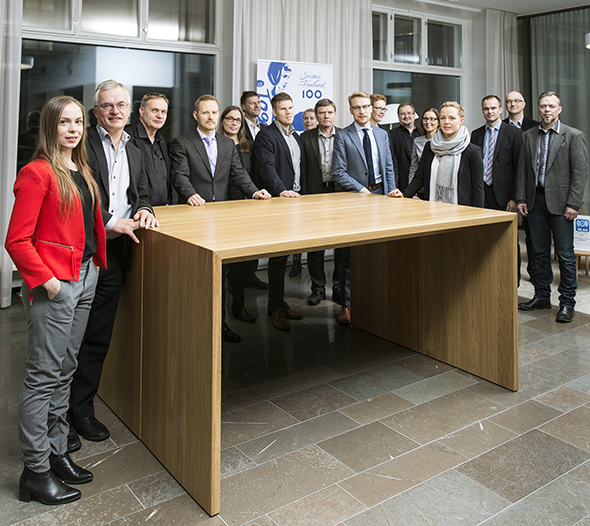
Smart grids function as a service platform for the electricity market as we move towards a more decentralised and greener electricity system. Fingrid’s experts participate in the workgroup which will sketch operating models for the electricity market up to 2025, and draw up concrete suggestions for measures to achieve the goals.
”At the moment, the group is creating a common view on how smart grids will shape Finland’s power system in the next ten years. We could come up with visions even further into the future, but the world will look very different already in ten years,” says the group’s secretary, Electricity Market Specialist Heidi Uimonen from Fingrid.
Renewable energy, real-time information exchange
The change underway in the electricity market brings increasingly more renewable production to the market that varies according to the weather, while adjustable electricity production decreases.
International climate treaties are guiding us to look for means to minimise carbon dioxide emissions, and solar and wind power are establishing themselves. With the help of new technology, renewable energy can be utilised in the electricity system more extensively and cost-efficiently.
In the future, the electricity market will be functioning close to real time, and systems such as Datahub, the centralised information exchange system for the electricity retail market, will be in use. In addition, many ordinary electricity consumers are also becoming producers, who can participate in and influence the electricity market with their choices.
One of the key goals of the smart grid workgroup is to find out how small-scale consumers and their potential for flexibility in electricity consumption and production could be included in the electricity market in the future. At the same time, the maintenance of security of supply needs to be promoted.
Flexibility first
”If we want to have a low-carbon society by 2050, we need a flexibly and cost-efficiently functioning electricity market,” says Fingrid’s Senior Advisor Risto Lindroos, a member of the workgroup.
”We are now making the choices and solutions where the electricity market either functions flexibly and on a market basis, or stiffly and in a much more controlled manner. I’d like to see a green, bright and cost-effective future,” he summarises.
Flexibility increases, when the separate electricity wholesale and retail markets are made to work seamlessly together, and small-scale consumers’ potential for flexibility is included in the market. Finland is at the forefront of development, because Finnish households have been equipped with remotely-read and hourly-measuring electricity meters . Hourly-priced electricity contracts and hourly imbalance settlement already enable the fair division of benefits in demand response.
”Finland has long traditions in matters relating to flexibility; for example, we’ve had night-time electricity available for quite a while. In the future, we should move from time-based control towards a more dynamic control based on price,” Lindroos continues.
Ideas for smart grid services
The workgroup sees smart grids as a platform, on which different operators can create customer-oriented services that can also be used to support the electricity system. The change will bring new business opportunities for agile technology and service companies, as new solutions are needed especially in the consumer interface.
”Finland is an internationally attractive operating environment for developing innovative products and services. An advanced electricity market and high technological expertise are an ideal base for trying out new things. We can be European pioneers on many fronts,” thinks Heidi Uimonen.
Smart grid visions place customers in the centre. For example, in the future, small-scale customers can choose whether and on what terms they hand over control of some of their electrical devices to the electricity market. This way, electricity consumption can be optimised and the consumer receives savings. Smart grids also enable choices based on values, for example relating to locally produced energy and security of supply.
”In the end, smart grids will have an impact on each and every Finn,” Uimonen says.






